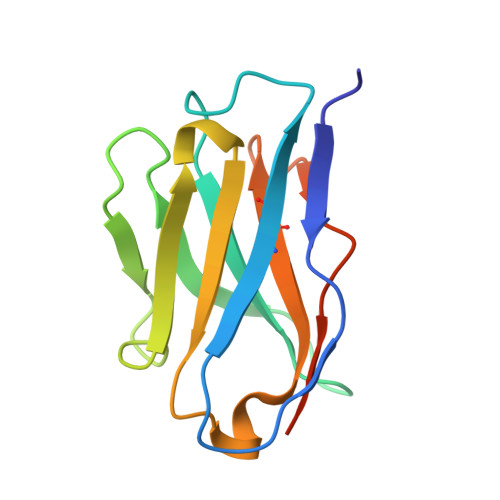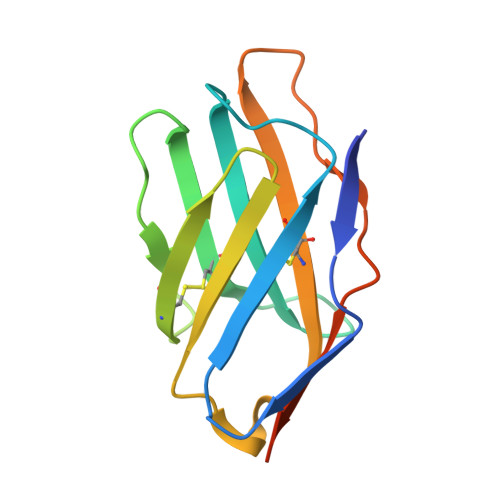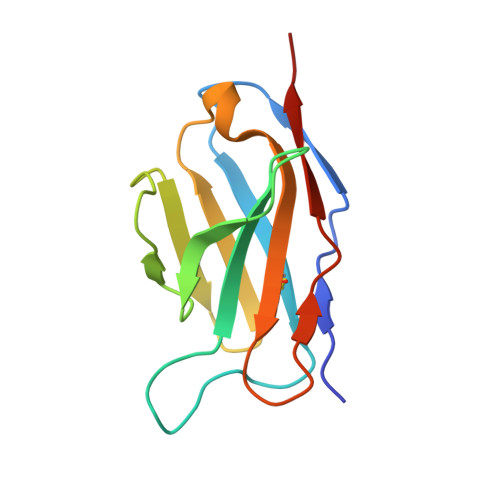Anti-CD28 Antibody-Initiated Cytokine Storm in Canines.
Rosinski, S.L., Storb, R., Strong, R.K., Sale, G.E., Stone, D.M., Gewe, M.M., Friend, D.J., Abrams, V.K., Randolph-Habecker, J., Graves, S.S.(2015) Transplant Direct 1
- PubMed: 25988188
- DOI: https://doi.org/10.1097/TXD.0000000000000516
- Primary Citation of Related Structures:
4R0L - PubMed Abstract:
CD28 signal blockade following T cell receptor activation is under intense investigation as a tolerance-inducing therapy for transplantation. Our goal is to produce a CD28-specific reagent as a therapy for the prevention of graft rejection and graft-versus-host disease in the canine model of allogeneic hematopoietic cell transplantation (HCT). We infused a monoclonal mouse anti-canine CD28 antibody (1C6 mAb) into four dogs and a fragment of antigen-binding (1C6 Fab) into two dogs. Pharmacokinetics, pathology, cytokine release, and the crystal structure of 1C6 Fv were evaluated. Within an hour of an IV injection of the 1C6 mAb, the dogs became leukopenic and developed a steroid-refractory cytokine storm. Two of the dogs developed high fevers, one experienced diffuse alveolar hemorrhage, and another developed gastrointestinal hemorrhage. The cytokine storm was characterized by elevated plasma levels of MCP-1, IP-10, IL-10, IL-6, and TNF-α. In addition, one dog showed elevated levels of IL-2, IL-8, and IL-18. In contrast, infusion of 1C6 Fab was well tolerated without any side effects. Dry-coating 1C6 mAb onto tissue culture plates induced CD3-independent proliferation and TNF-alpha production. Crystal structure analysis revealed that 1C6 binds to canine CD28 in a manner different than previously reported for conventional agonistic or superagonistic antibodies. These results indicate that dogs and humans develop a similar cytokine storm following infusion ofanti-CD28 mAb, providing an appropriate large animal for further study. 1C6 Fab warrants evaluation as a tolerance-inducing reagent in the canine model of allogeneic HCT.
Organizational Affiliation:
Clinical Research Division, Fred Hutchinson Cancer Research Center, Seattle Washington, 98109 ; Department of Medicine, University of Washington, Seattle, Washington, 98195.



















